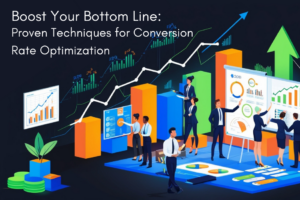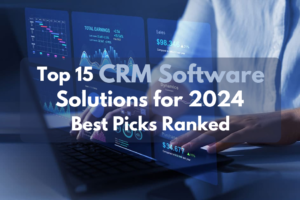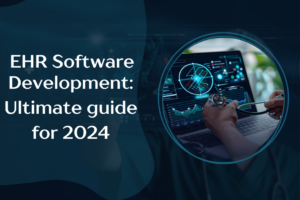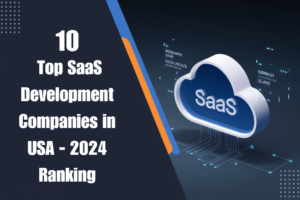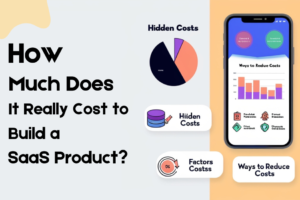How Much Does Ecommerce Website Cost in 2024?
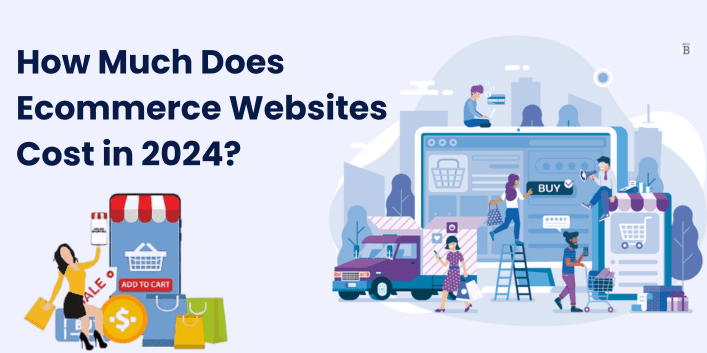
Table of ContentsToggle Table of ContentToggle
Unveiling Ecommerce Website Cost
Starting an e-commerce website is like shifting to the digital marketplace, full of life. Each detail is depicted through pixels or code and hence opens doors to global opportunities. Much goes into shaping what your online store looks and functions like.
Having e-commerce inclusion in today’s modern world is no longer a trend; actually, it’s an indispensable business strategy. But to most people who get into this scene, it’s taken on board that looks like unknown waters, with confusing numbers and guesstimates leaving one gasping for breath.
Today, we are going to talk about ecommerce website cost. Blend innovation with an inside track on how to unravel mysteries surrounding the financing of digital commerce. At the back, design, development, and hosting all costs intertwined to play their roles in reshaping online success.
Together, we shall break down these cost structures, show where the hidden money is draining, and give you uncluttered views to have you well on your way to formulating your ecommerce journey. It’s a journey powered by knowledge and guided by insight.
Factors Disclosed: eCommerce Website Development Cost
Knowing what would influence a project’s cost helps businesses think smart in planning for the development of an eCommerce website. If they identify features to be included, complexity in design and information on the integration with other systems, then businesses can budget accordingly. Other paramount considerations for business would be planning for growth and providing appropriate security.
This makes it impossible to use a user-friendly content management system that can facilitate regular or ongoing updates by making them easier and more cost-effective. Testing and troubleshooting before the launch of the website ensures that the website will run smoothly for customers.
Making wise decisions in these regards will help a business to come up with a website that achieves their goals, satisfies customers, and grows with the expansion of its business. This way, every investment on the website will pay toward its efficiency and productivity.
Functionality Needs: The features your eCommerce website requires—such as product management, search tools, payment gateways, and user accounts—directly influence eCommerce website development costs. These functionalities are essential for creating a good eCommerce website and are key factors in determining how much does an ecommerce website cost and what is the average cost of a website.
Design Complexity: Choosing between a unique custom design or a template from platforms like Shopify or WooCommerce affects website construction costs. Custom designs may require higher e-commerce website creation costs but offer more flexibility and branding opportunities.
Integration Requirements: Connecting your eCommerce site with other systems, such as inventory management or shipping calculators. It can increase eCommerce website cost but is important for good eCommerce website operation.
Scalability Planning: A scalable plan means that the amount you have to invest in your eCommerce website growth will scale as the business increases. This escalates the initial ecommerce development cost while helping reduce it in the long run.
Security Measures: Required security features that are to be taken care of with SSL certificates and secure payment processing, give extensive support to eCommerce website security and enhance the costs of eCommerce development.
Content Management: Effectiveness in managing content, products, and promotions has an impact on both eCommerce development and maintenance costs.
Testing and Quality Assurance: Perform thorough device and browser testing to ensure that your eCommerce website works correctly. Which will impact custom pricing in eCommerce.
Why It Matters: Understanding Ecommerce Website Costs
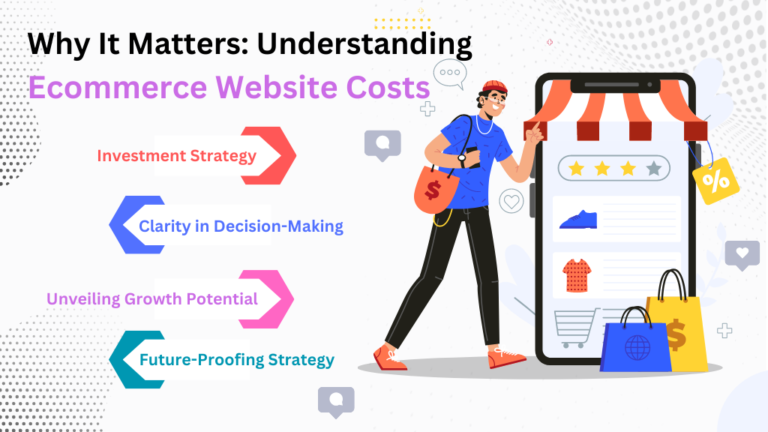
Understanding the financial landscape of launching an ecommerce website is all about the vision that one has regarding the digital footprint of one’s business. Here is why understanding the cost of an ecommerce website has to be paramount in every mind.
Investment Strategy: When learning about ecommerce website development costs, one is actually learning strategic investment. From calculating the initial website construction cost to forewarning about ongoing maintenance expenses.
Clarity in Decision-Making: A good understanding of the dynamics of an ecommerce website cost allows businesses to make lucid decisions. This is basically breaking down exactly what something as simple as design complexity or the integration intricacies combined with the spate of ecommerce customized pricing options entail.
Unveiling Growth Potential: Understanding how much does an ecommerce website cost unravels growth potentials. This helps in affordable choices and scaling, thus assuring that the website grows along with the business without strained finances ROI Projection. Ecommerce website development cost is not expenditure at its plainest; instead, it’s return on investment in mind. It is trying to approximate what kind of business growth investments in risk controls, SEO optimization, and content management will translate to.
Bespoke Solutions From the good ecommerce website consideration to particulars on the creation of e-commerce websites, understanding the cost of the website enlightens bespoke solutions. It will help you resolve upon custom-built platforms or licensing existing frameworks as Shopify or WooCommerce.
Future-Proofing Strategy: It simply means that ecommerce website costs are to be anticipated in how future-proof one is. This would mean preparing for any unexpected upgrades, adapting to the shift in technology, and ensuring that the website would be competitive and secure in the shifting digital scene.
Fueling Growth: The Impact of Ecommerce Website Cost
Modern businesses have to benefit from an ecommerce website to be successful. Knowing how much it costs to develop an ecommerce website can help anyone make the right decisions for growth. In other words, it means assessing how much an ecommerce website will cost and effectively planning for the cost of the website’s construction.
Finally, completing the budget to create a good ecommerce website, a consideration of custom pricing for ecommerce will have to be made between a custom-built solution and platforms such as Shopify or WooCommerce.
It is because of the strategic investment in features like secure payment gateways and SEO optimization that e-commerce website creation gets an edge and allows attracting more customers. By developing a strong e-commerce website, keeping future needs and scalability in mind, the business acts in accordance with a market’s trends and helps secure its long-term success within the digital marketplace.
Building Blocks: Elements of Ecommerce Website Development
The ecommerce website’s cost and the approach to create a good ecommerce website are among the things a business should consider if it wants to develop a successful online project. A business that is willing to spend money on a well-developed and optimized e-commerce platform is in all likelihood going to be successful in the future and will be satisfied with their repeat customers in the tight digital market. A poorly designed e-commerce platform that is not user friendly will not only deter the customers from running away but also disappoint them. When this happens, it means the firm is likely to lose its present customers due to a difficult experience with usability, slow speeds, or low responsiveness.
Understanding Ecommerce Website Cost: When planning to create an ecommerce website, one of the first questions that often arises is how much does an ecommerce website cost? The answer varies widely based on factors such as the complexity of the site, features required, customization needs, and the expertise of the development team.
Factors Affecting Ecommerce Website Cost: The cost of ecommerce website development can be influenced by several factors, including website construction cost, ecommerce customized pricing, and the type of e commerce website creation chosen. Custom-built websites typically incur higher costs due to tailored designs and functionality.
Components of a Good Ecommerce Website: A good ecommerce website goes beyond cost considerations. It includes user-friendly navigation, mobile responsiveness, secure payment gateways, effective order management, and SEO optimization to attract organic traffic. These elements collectively enhance the user experience and contribute to the success of the online store.
Average Cost of Ecommerce Website Development: While there is no fixed average cost of a website, ecommerce development costs can range from a few thousand dollars to tens of thousands, depending on the scope and scale of the project. It’s essential to budget for ongoing maintenance and updates to ensure the website remains secure and competitive in the market.
Creating an Ecommerce Website: To create an ecommerce website, businesses should collaborate with experienced developers who understand e commerce website creation intricacies. This partnership ensures the site is built to meet specific business needs while adhering to best practices in design, functionality, and security.
Critical Features: Keys to Successful Ecommerce Websites
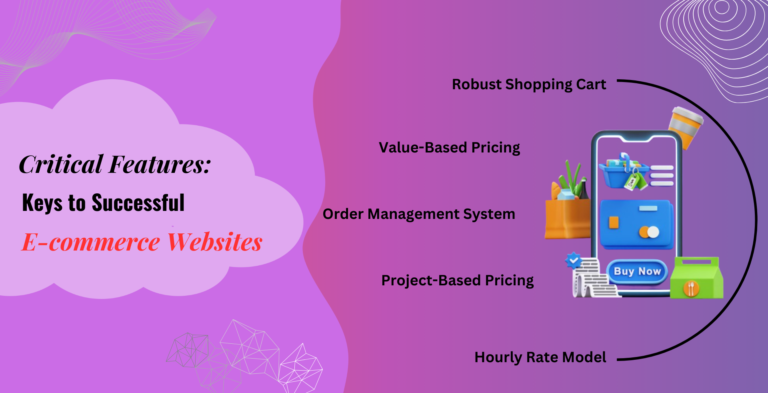
It comes to building a great ecommerce website, these elements are crucial. They not only enhance your experience but also ensure that every interaction with our site is safe, efficient, and enjoyable. As for the cost of ecommerce website development, it varies depending on factors like website construction cost, ecommerce customized pricing, and the complexity of e commerce website creation. Rest assured, we’re dedicated to delivering a good ecommerce website that meets your needs and exceeds your expectations.
Robust Shopping Cart: Imagine a shopping cart that feels like your personal assistant easy to use, allowing you to effortlessly add or remove items, calculate totals including taxes and shipping, and apply discounts or promo codes.This makes checking out effortless while one is completing a purchase.
Order Management System: There is an order management system at the back end that keeps things smooth. Allow tracking orders and shipments easily and in real time, extend hassle-free returns, and keep customers notified at every turn. With this, you can ensure operational efficiency while allowing the least possible dissatisfaction at the customers’ end.
Security Features: Information protection is paramount, and this is the reason we shall be incorporating SSL certificates, PCI compliance, and encryption. The SSL certificate will allow us to encrypt data between your browser and our website, while PCI compliance lets us maintain that we adhere to industry standards in rerouting credit card information securely. Additional encryption provides extra protection so that sensitive data are just safe and confidential.
Search and Navigation: That should be very easy. Our search bar is way more like a magic wand, thus helping to narrow down through filters and categories for particular products in your search. All these product pages are designed not only for usability but also to get the maximum customer satisfaction, where you spend less time searching and more time shopping.
Customer Reviews/Ratings: Your voice counts Leave reviews and ratings to share your experience with others. This not only builds credibility but it also helps fellow shoppers make cultured decisions. It is community engagement at its very finest, making a shopping experience rewarding in full bloom.
Customer Support: Want a lending hand? Our customer support has got your back. From live chat to FAQs to contact details, aid is no farther than your mouse. We endeavour to provide support throughout your shopping journey
Pricing Models for ecommerce Web Design: Every model of pricing has its benefits, which include client preference, project complexity, industry standard, and the kind of business model which the agency has adopted. Fundamentally, the perfect pricing strategy for any ecommerce website design service provider will need to strike a delicate balance between being profitable and pleasing the clientele while setting expectations of what happens from the proposal stage.
Fixed Price Model: This is a straight-up type of approach where a fixed amount for website design services is quoted. It clarifies to the client upfront, and hence is easily budgeted by both parties. Businesses offering such models usually lay down what this package will entail for instance, the number of pages, functionalities, or design revisions so it serves as a guideline and clears any misconceptions.
Hourly Rate Model: Hourly rates are also charged for ecommerce website design services. This model is flexible and thus accommodates the scope of the work done and changes requested to a design. It will, therefore, suit projects whose scope may be changing over time and details hours worked on an hourly basis.
Project-Based Pricing: In this model, the e-commerce website design cost will be computed based on the scope and complexity of work. It will take into account things like the number of pages, features to be integrated, customization requirements, and timelines. Companies usually come up with a detailed proposal that lays out deliverables, milestones, and the total cost for the project in order to make sure both parties are on the same page.
Subscription or Retainer Model: Some ecommerce website design agencies offer subscription or retainer-based pricing. This involves clients paying a recurring fee for ongoing design services, updates, maintenance, and support. It provides predictable income for the agency and ensures continuous support and improvement of the website for the client.
Value-Based Pricing: This model focuses on the perceived value of the ecommerce website design services rather than the cost or time involved. Pricing is based on the benefits and outcomes delivered to the client, such as increased sales, improved user experience, or enhanced brand perception. It requires a deep understanding of the client’s business goals and challenges to tailor the website design accordingly.
Combination or Customized Pricing: Many ecommerce website design firms mix or adapt the aforementioned concepts to meet specific customer needs. Some, for example, will charge a fixed amount for the initial portion of their design and development work, then revert to a retainer model for maintenance and upgrades.
Choosing Wisely: Approaches to Ecommerce Website Development
Building an ecommerce website is much like digital artwork that binds innovation, user experience, and strategic investment into a creative piece. Here’s how to do this graciously:
Custom Craftsmanship:Imagine having an ecommerce website that would be a custom-made shop, underlining your brand identity and solving specific business-related problems. It will grant uniqueness to your online presence, standing out amidst the digital noise, even if it is burdened with ecommerce website cost considerations.
Strategic investment:One has to clearly understand the cost of e-commerce website development. It is an investment in the future of your digital storefront, and it includes aspects like website construction cost, ecommerce custom pricing, or the creation of a good ecommerce website that appeals to your kind of target audience.
Innovative Approaches:Rather than merely building a website, envision it as an immersive experience. Incorporate cutting-edge technologies and design elements that captivate visitors from their first click to checkout, optimizing every interaction for conversion and satisfaction.
Agile Adaptation:Embrace agile methodologies in ecommerce website creation. This iterative approach allows for continuous refinement based on user feedback and evolving market trends, ensuring your site remains dynamic and responsive to customer needs.
User-Centric Innovation: Elevate user experience (UX) to an art form. Through intuitive navigation, personalized recommendations, and seamless checkout processes, transform browsing into an enchanting journey that inspires trust and loyalty.
Transparent Cost Clarity: Addressing how much does an ecommerce website cost upfront ensures transparency and alignment of expectations. Whether opting for a fixed price model or project-based pricing, clarity in cost empowers informed decision-making and fosters a collaborative partnership.
Strategic Partnerships: Collaborate with seasoned professionals in ecommerce website development who understand not just the technicalities, but the nuances of e commerce website creation. Together, sculpt a digital masterpiece that embodies innovation, sophistication, and enduring value.
Smart Savings: Tips for Cost-Effective Ecommerce Development
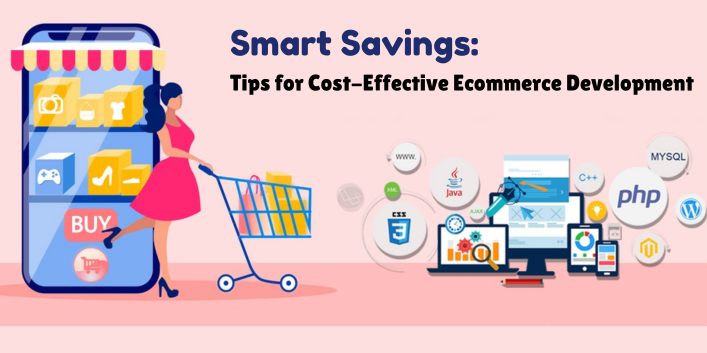
These strategies can effectively manage ecommerce website costs while creating a robust online presence. Whether you’re exploring ecommerce website development costs or seeking to optimize your ecommerce platform choice. These tips ensure you achieve a good ecommerce website that meets your needs
Smart Platform Choices: Begin by selecting the perfect ecommerce platform that matches your business goals without blowing the budget. Look into user-friendly options like WooCommerce or Magento, which pack a punch with features while keeping costs manageable. These platforms are open-source, meaning no hefty licensing fees eating into your ecommerce website cost.
Template Brilliance: Save time and money with pre-designed templates that are not only cost-effective but also customizable. These offer a quick start to your online presence, letting you add your brand’s flair without starting from scratch. It’s like fitting together puzzle pieces to create a unique, eye-catching storefront.
MVP Strategy: Start lean with a Minimum Viable Product (MVP). This approach focuses on launching essential features first, keeping initial ecommerce website development costs low. It’s like planting a seed and nurturing it with customer feedback to grow your website organically.
Strategic Outsourcing: Consider outsourcing specialized tasks to experts in ecommerce development. This saves on overhead costs while benefiting from their expertise in areas like design, SEO, or backend development. It’s like having a skilled team without the hefty payroll.
Empowerment with CMS: Optimizing for user-friendly Content Management Systems (CMS) such as WordPress or Shopify. These platforms allow you to manage content, products, and promotions independently, saving on ongoing maintenance costs. It’s like having the keys to your own digital kingdom.
Plug-and-Play Solutions: Integrate third-party tools and plugins offered by your ecommerce platform. These tools streamline processes like payments, analytics, and marketing, providing cost-effective solutions without reinventing the wheel. It’s like adding turbo boosters to your ecommerce engine.
Cloud-powered Flexibility: Choose scalable cloud hosting options like AWS or Google Cloud. These platforms offer flexibility and cost-efficiency, allowing you to scale resources based on demand. It’s like having your own virtual storefront that grows with your business.
How can businesses strike a balance between quality and budget in ecommerce website design?
An effective e-commerce website can be balanced with price analysis and the corresponding decisions. The steps for balancing quality with one’s budget, considering ecommerce website cost and development, are as follows:
Clearly define goals and priorities: Begin by defining your business goals for the website. Identification of major features and functionalities of prime significance to your e-commerce success is pretty helpful because, in this way, a focused approach will aid you in the management of e-commerce website development cost effectively.
Use Pre-built Templates: Cut down time and cost by starting with flexible, pre-built templates. These templates are pocket-friendly and can be easily customized to your brand identity, which reduces the website building cost.
Intelligent Outsourcing: Outsource activities related to design, development, and SEO to professional outfits. Doing this can reduce overheads that come from maintaining full-time employees to get a good ecommerce website without breaking your bank.
Continual Optimisation: Monitor the Website performance and customer behaviour on a regular basis. Incremental updates to the platform will optimize user experience and the quality of the website overall. Which remains competitive within the marketplace of e-commerce websites?
Budgeting: Save some of the budget for ongoing maintenance and security updates and for future upgrades. This kind of approach lets one avoid unexpected expenses to a great extent and provides long-term sustainability of the e-commerce website.
Conclusion: Unravel the Cost of Ecommerce Websites
To sum it up, understanding ecommerce website costs is very much drawing a route through a digital ocean of choices and pitfalls. Having an idea as to what influences those very costs features you need, design complexity, scalability. You will be able to steer your budget wisely toward top-notch quality.
Ready-made templates, outsourcing to experts, and flexible cloud hosting will help you save some money without giving up the core attributes of a great ecommerce site. By further fine-tuning, through user feedback and data insights. You will be able to keep your site competitive and customer-friendly.
Ultimately, it all comes down to balancing your goals against smart budgeting and the picking of solutions that fit your needs. This will not only help in improving efficiency but also lay a strong foundation for long-term success on the digital marketplace.
About Author

Written By Darshan Saroya
Darshan Saroya is the creator and CEO of the content development company. He writes and has over 7+ years of experience as a content marketer, for technoprofiles.com generating on blogging , article's and and website technique.

